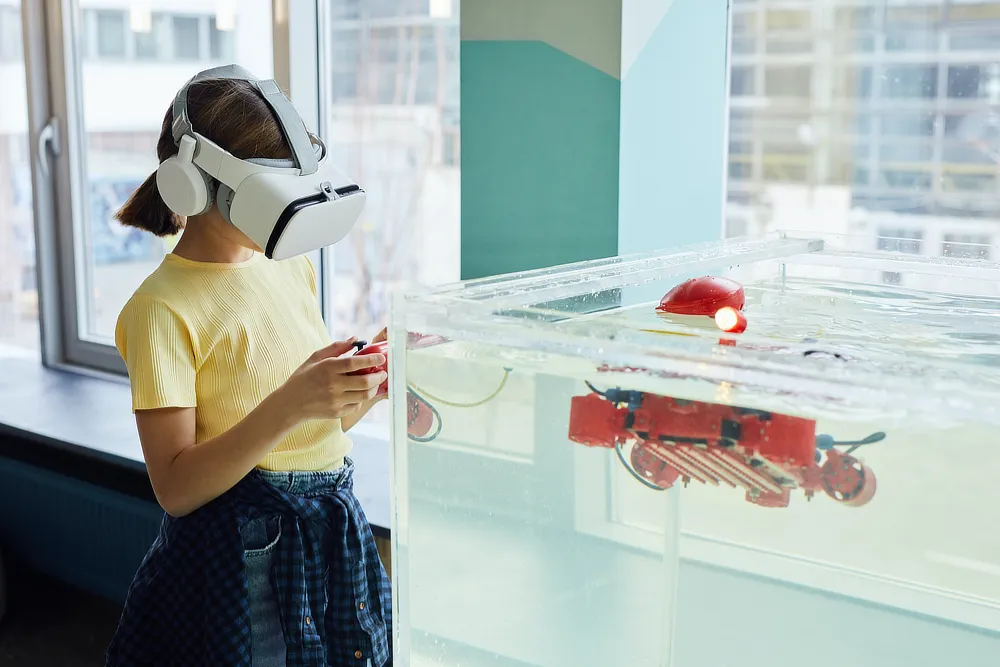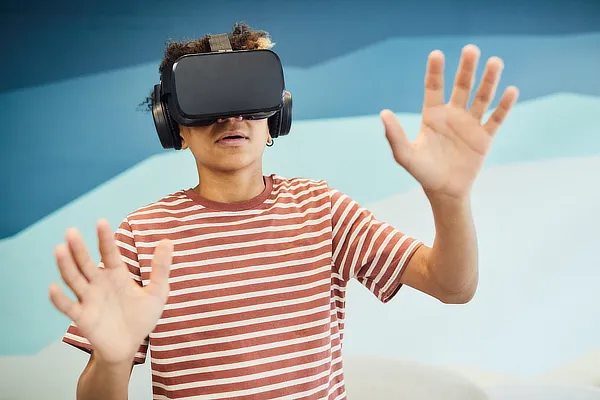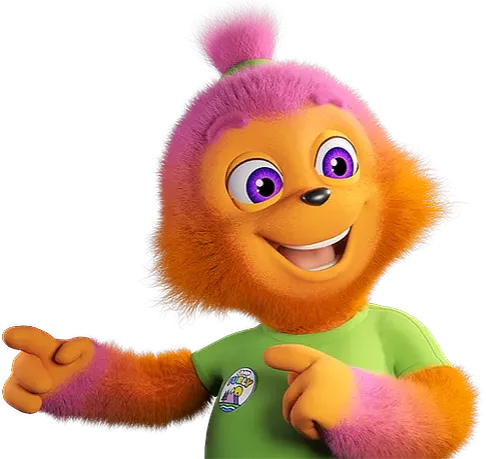Mixed Reality and Virtual Reality Shaping the Future of Education.

In the digital age, technology has transformed the way we learn and interact with information. Mixed Reality (MR) and virtual reality in education is one such technology that has revolutionized traditional learning methods. With MR, students can experience a virtual world that blends real and digital elements to create an immersive learning environment.
In classrooms, MR can be used to enhance the learning experience by bringing abstract concepts to life. For example, students can explore complex scientific concepts by visualizing them in 3D or even conduct experiments in a simulated environment.
One of the most exciting applications of MR in education is virtual field trips. With mixed reality headsets, students can travel to different parts of the world without leaving their classroom. They can explore historical sites or natural wonders and interact with them in a way that was never before possible.
With mixed reality tools, educators can create immersive learning experiences that help students visualize abstract concepts and engage with educational material in new ways.
This technology also allows for interactive simulations and experiments that can help students retain information better than traditional teaching methods alone. By leveraging mixed reality technology, educators have a powerful tool at their disposal to improve learning outcomes for students of all ages and backgrounds.

Education and Use of Mixed Reality & VR
The integration of mixed reality in education is rapidly transforming the way students engage with learning materials. By combining virtual reality (VR) and augmented reality (AR), educators can create immersive experiences that blend real-world environments with virtual content. Tools like HoloLens and Meta Quest allow learners to interact with virtual objects within a virtual environment, enabling collaborative learning that transcends traditional classroom boundaries. For instance, language learning can be enhanced by using mixed reality to immerse students in realistic scenarios where they can interact with virtual elements in real-time.
The benefits of mixed reality in education are numerous, including the promotion of interactive learning and the ability to visualize complex concepts through digital objects. Schools and universities are increasingly recognizing the potential of mixed reality to transform education by making learning more engaging and effective. As virtual and real worlds converge, the future of mixed reality looks promising, with endless possibilities for students to explore and discover knowledge in ways previously unimaginable.

Education and Use of Mixed Reality & VR
The integration of mixed reality in education is rapidly transforming the way students engage with learning materials. By combining virtual reality (VR) and augmented reality (AR), educators can create immersive experiences that blend real-world environments with virtual content. Tools like HoloLens and Meta Quest allow learners to interact with virtual objects within a virtual environment, enabling collaborative learning that transcends traditional classroom boundaries. For instance, language learning can be enhanced by using mixed reality to immerse students in realistic scenarios where they can interact with virtual elements in real-time.
The benefits of mixed reality in education are numerous, including the promotion of interactive learning and the ability to visualize complex concepts through digital objects. Schools and universities are increasingly recognizing the potential of mixed reality to transform education by making learning more engaging and effective. As virtual and real worlds converge, the future of mixed reality looks promising, with endless possibilities for students to explore and discover knowledge in ways previously unimaginable.
Why MR Learning Experiences Are the Future
As the education sector continues to evolve, VR in education is emerging as a powerful tool that reshapes the learning process. By utilizing virtual and augmented reality , educators can provide immersive experiences that enhance interactive learning experiences. VR educational technology allows students to explore complex concepts within a virtual space, fostering an environment where they can engage deeply with the material. This immersive and engaging learning approach not only captures student's attention but also facilitates better retention of information.
Moreover, the integration of AR and VR creates personalized learning opportunities tailored to individual needs. With mixed reality , educators can design scenarios that cater to various learning styles, making education more accessible. Using virtual reality and augmented reality tools, learners can engage in extended reality experiences that simulate real-world applications, bridging the gap between theory and practice. As VR and AR in education become more prevalent, they promise to transform traditional methodologies, offering a future where learning is not just informative but also transformative.
Gamified Education: Learning Through Play
In the realm of education and training, gamified education is revolutionizing the learning process by integrating virtual reality and augmented reality (VR and AR). By utilizing VR technology, educators can provide immersive experiences that allow students to explore complex concepts in a virtual space. This immersive and engaging learning approach not only captures students' attention but also enhances their understanding through interactive learning experiences.
Furthermore, mixed reality can be used to create personalized learning paths that cater to individual needs. Augmented reality and virtual reality (AR and VR) tools can extend the boundaries of traditional learning by offering learning opportunities that are both engaging and effective. As VR and AR in education continue to evolve, the education sector is witnessing a significant shift towards extended reality solutions, enabling students to interact with content in innovative ways.
Using virtual reality , educators can create simulations that mimic real-world scenarios, making education not only more relevant but also more exciting. Reality can create a rich tapestry of experiences that deepen comprehension and retention. Ultimately, the integration of VR and AR in the classroom fosters an environment where students are motivated to learn through play, making the learning process both fun and effective.
Studio Liddell is Education Best Partner.
Studio Liddell is education's best partner, seamlessly blending physical and digital realms to enhance the learning process. By incorporating mixed reality (MR) into educational environments, they provide immersive and interactive experiences that transform traditional teaching methods. For instance, virtual reality (VR) and augmented reality (AR) allow students to explore complex subjects in a safe and controlled environment, where they can engage with both real and virtual elements. This approach fosters collaboration, enabling students to work together in a virtual space while enjoying a personalized learning experience tailored to their unique needs.
Mixed reality is transforming education by offering invaluable learning opportunities. With MR, learners can embark on a learning journey that equips them with essential skills in virtual settings. Mixed reality also facilitates interactive learning experiences that keep students engaged, allowing them to interact with content in ways previously unimaginable. By leveraging this technology, educators can create dynamic and effective learning environments that inspire curiosity and foster deeper understanding.
Related Pages
Need your mixed reality app call us today!
We are a team of experienced mixed reality developers based in Manchester UK, but we work with clients all over the world.
Call now +44 (0) 7798 834 159
